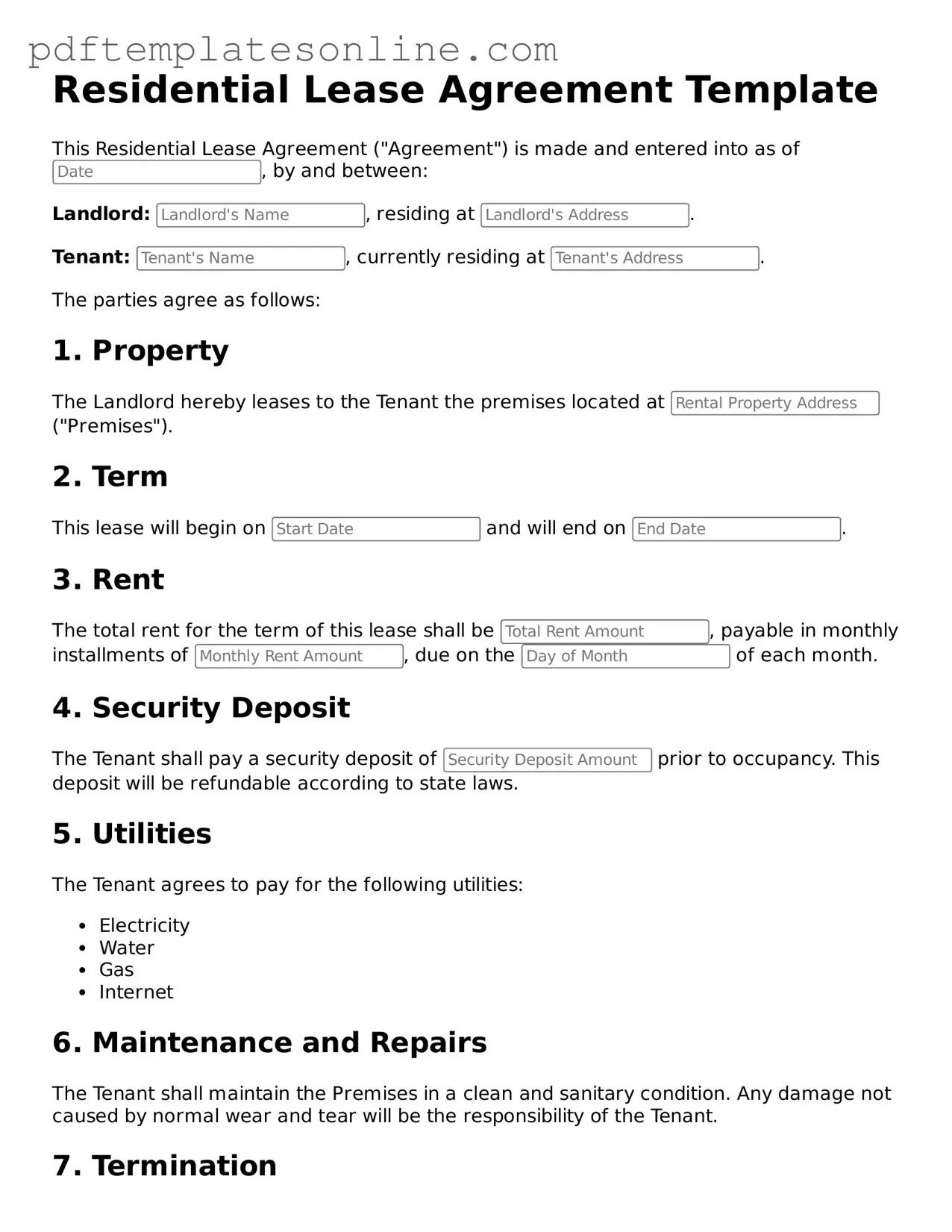Filling out a Lease Agreement can be a straightforward process, but many people make common mistakes that can lead to confusion or disputes later on. One frequent error is failing to provide accurate personal information. When listing names, addresses, or contact details, ensure everything is correct. A simple typo can cause issues when trying to reach out to your landlord or vice versa.
Another mistake is not reading the entire document before signing. Many individuals rush through the process and overlook important terms and conditions. This can lead to misunderstandings about rent due dates, maintenance responsibilities, or rules regarding pets. Taking the time to read the lease thoroughly can prevent headaches down the line.
Some people neglect to specify the lease duration. It’s essential to clearly state how long the lease will last. Without this information, both parties may have different expectations about the rental period, which can lead to disputes when it comes time to renew or terminate the lease.
Not including all agreed-upon terms is another common pitfall. If you and your landlord have discussed specific conditions, such as included utilities or maintenance responsibilities, make sure these are documented in the lease. Verbal agreements can easily be forgotten or misinterpreted.
Many individuals also forget to check for additional fees. Sometimes, landlords include extra charges for things like late payments or maintenance. Be sure to read the fine print and understand all potential costs associated with the lease.
Another mistake is not documenting the condition of the property before moving in. Taking photos or notes can be invaluable if disputes arise regarding security deposits or damage claims. Without this documentation, you may find it challenging to prove the property's condition when it’s time to move out.
People often fail to clarify the security deposit terms. It’s important to know how much the deposit is, what it covers, and the conditions for its return. This information should be clearly stated in the lease to avoid any surprises when you move out.
Some individuals overlook the importance of understanding the termination clause. Knowing how to properly end the lease and the notice period required is crucial. This can help prevent unexpected penalties or complications when you decide to move.
Another common error is not considering the implications of subletting. If you plan to have someone else stay in the rental unit, make sure the lease allows for it. Many leases have strict rules about subletting, and violating these terms can lead to eviction.
Finally, people sometimes forget to keep a copy of the signed lease. It’s essential to have your own copy for reference. This way, you can easily check the terms and conditions whenever needed. Keeping organized records can save you from future disputes.
